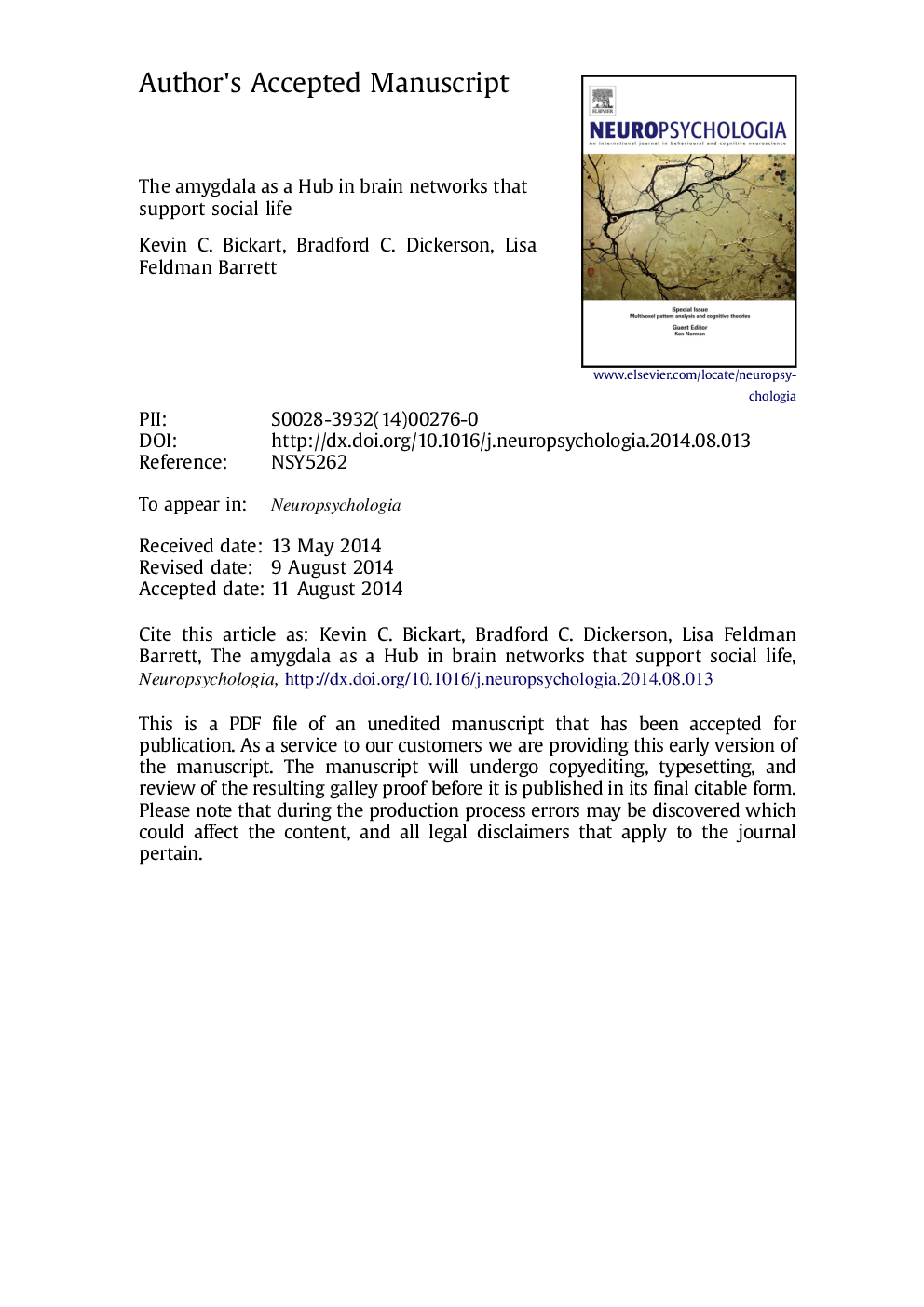| Article ID | Journal | Published Year | Pages | File Type |
|---|---|---|---|---|
| 7320768 | Neuropsychologia | 2014 | 42 Pages |
Abstract
A growing body of evidence suggests that the amygdala is central to handling the demands of complex social life in primates. In this paper, we synthesize extant anatomical and functional data from rodents, monkeys, and humans to describe the topography of three partially distinct large-scale brain networks anchored in the amygdala that each support unique functions for effectively managing social interactions and maintaining social relationships. These findings provide a powerful componential framework for parsing social behavior into partially distinct neural underpinnings that differ among healthy people and disintegrate or fail to develop in neuropsychiatric populations marked by social impairment, such as autism, antisocial personality disorder, and frontotemporal dementia.
Related Topics
Life Sciences
Neuroscience
Behavioral Neuroscience
Authors
Kevin C. Bickart, Bradford C. Dickerson, Lisa Feldman Barrett,
